Jeeter
XS650 Addict
I used Duplicolor's "etching primer" and their "wheel coating" to refurbish a set of 1982 Yamaha XJ650J wheels (my wife's project bike). It worked out SO well that I wanted to share the experience.
First off, I had to learn about the difference between laquers and enamels. Laquers cure in a much different manner than enamels. Enamels have what is known as a "recoat window" What this means is that when an enamel paint "dries" (cures) it doesn't do so by simply evaporating it's solvents, it does so through a molecular curing process. That process gives you a one hour recoat window. That means that you must add a second (3rd?) coat inside of the one hour recoat window, otherwise you must wait for whatever the manufacturer's recommended cure period is. In the case of the Duplicolor wheel coating that cure period is seven days.
So, if you do not hit a subsequent coat inside of the one hour recoat window, you gotta wait a week before you can add the next coat! The enamel has to be permitted to go through it's entire molecular curing process before it can have more coats added. And of course that means you must do surface prep for the second coat, because when you add the wet enamel to the existing enamel layer the new wet paint DOES NOT dissolve the existing layer so as to sortof "meld" with it. So that previous coat must be prepared to accept a new coat on top of it (sanding, green 3M pad, and so on to give the existing coat "tooth" for the new coat to hold on to).
If you apply the subsequent coats inside of the recoat window, the molecular curing process has not gone far enough to be a problem, and adding the next coat will result in a successful application. But once that stuff gets too far into the curing process, you gotta wait a week, and you have to do surface prep.
LAQUER: Laquer can have as many coats as desired, and they may be applied at just about any time. The reason for this is the way that laquers cure or "dry". They cure by simply evaporating their solvents. So when you apply a new coat, the fresh solvents in the wet paint dissolve the existing layer of paint and allow the two layers to adhere to one another. There is no recoat window, no cure period like enamels have. Every fresh coat of laquer just "softens" the existing coat and allows the new coat to stick.
That's a generalized description of the way the two types of paints work, but you get the picture by now. So you may ask "why on Earth would anyone want to use enamel?". It's much more durable than laquer, and totally repairable (unlike powdercoating which must be very carefully scorched with a propane torch then bead or sand blasted to remove the residue. Only then can a fresh coat of powdercoating be applied. There is no other way to repair a powdercoated finish. You can attempt to color match the scratched/damaged PC'd surface with some kind of paint. But most likely it won't match well and will look pretty nasty).
So to me, the Duplicolor wheel coating was the best choice of the three (powercoating, laquer, or enamel).
I started by SANDblasting the stock Yamaha wheels clean (after removing all of the wheel weights and wheel bearings). I then applied the Duplicolor Etching Primer to give the wheel coating something yummy to land on. That primer really covers well! It has a lot of particulates and solids in it as well, so it's a sortof light filler that would work well for color sanding.
After allowing the primer to cure (per the instructions), I jumped in on applying the wheel coating. Now one of the conditions required for applying that stuff is that it must be done below 80f. What I found is that if I tried to spray it on with the temp any higher than about 80f the paint would begin drying in mid-air. So to compensate I had to move the nozzle closer to the workpiece so that the paint wouldn't dry before it hit the surface. Well, all that technique served to do was produce runs. Since it was mid-summer here in the Sonoran Desert, I had about one hour every morning between 4AM and 5AM or so before temps rose above 80f, and I could have the spray nozzle at the correct distance to produce good results. Since it took about 45 minutes+ to apply one coat, that meant that the temp would be above 80f for a subsequent coat. Since the wheel coating is an enamel and has that recoat window thing going on, that meant it took me three weeks to get these two wheels primered and coated with 2 coats of wheel coating. Ugh!
Worth it? TOTALLY! I mean, I am NO KINDA PAINTER, not by any stretched description. And yet these wheels turned out fairly nice (probably could have looked better to some folks had I added a clear coat, but I thought the wheel coating's finish was fine so I decided not to add a clear coat). So, I'd have to say that the Duplicolor etching primer and wheel coating setup works pretty well. It is easy to use as long as you FOLLOW THEM INSTRUCTIONS regarding curing times and recoat windows. And this finish is 100% repairable. Sand, prep, shoot, call it done. So stone chips and other highway crappage damage may be fixed with relative ease.
About $8 per can, I found both primer and wheel coating at my local Pep Boys.
Oh, by the way the color of the wheel coating is called "Graphite".
First off, I had to learn about the difference between laquers and enamels. Laquers cure in a much different manner than enamels. Enamels have what is known as a "recoat window" What this means is that when an enamel paint "dries" (cures) it doesn't do so by simply evaporating it's solvents, it does so through a molecular curing process. That process gives you a one hour recoat window. That means that you must add a second (3rd?) coat inside of the one hour recoat window, otherwise you must wait for whatever the manufacturer's recommended cure period is. In the case of the Duplicolor wheel coating that cure period is seven days.
So, if you do not hit a subsequent coat inside of the one hour recoat window, you gotta wait a week before you can add the next coat! The enamel has to be permitted to go through it's entire molecular curing process before it can have more coats added. And of course that means you must do surface prep for the second coat, because when you add the wet enamel to the existing enamel layer the new wet paint DOES NOT dissolve the existing layer so as to sortof "meld" with it. So that previous coat must be prepared to accept a new coat on top of it (sanding, green 3M pad, and so on to give the existing coat "tooth" for the new coat to hold on to).
If you apply the subsequent coats inside of the recoat window, the molecular curing process has not gone far enough to be a problem, and adding the next coat will result in a successful application. But once that stuff gets too far into the curing process, you gotta wait a week, and you have to do surface prep.
LAQUER: Laquer can have as many coats as desired, and they may be applied at just about any time. The reason for this is the way that laquers cure or "dry". They cure by simply evaporating their solvents. So when you apply a new coat, the fresh solvents in the wet paint dissolve the existing layer of paint and allow the two layers to adhere to one another. There is no recoat window, no cure period like enamels have. Every fresh coat of laquer just "softens" the existing coat and allows the new coat to stick.
That's a generalized description of the way the two types of paints work, but you get the picture by now. So you may ask "why on Earth would anyone want to use enamel?". It's much more durable than laquer, and totally repairable (unlike powdercoating which must be very carefully scorched with a propane torch then bead or sand blasted to remove the residue. Only then can a fresh coat of powdercoating be applied. There is no other way to repair a powdercoated finish. You can attempt to color match the scratched/damaged PC'd surface with some kind of paint. But most likely it won't match well and will look pretty nasty).
So to me, the Duplicolor wheel coating was the best choice of the three (powercoating, laquer, or enamel).
I started by SANDblasting the stock Yamaha wheels clean (after removing all of the wheel weights and wheel bearings). I then applied the Duplicolor Etching Primer to give the wheel coating something yummy to land on. That primer really covers well! It has a lot of particulates and solids in it as well, so it's a sortof light filler that would work well for color sanding.
After allowing the primer to cure (per the instructions), I jumped in on applying the wheel coating. Now one of the conditions required for applying that stuff is that it must be done below 80f. What I found is that if I tried to spray it on with the temp any higher than about 80f the paint would begin drying in mid-air. So to compensate I had to move the nozzle closer to the workpiece so that the paint wouldn't dry before it hit the surface. Well, all that technique served to do was produce runs. Since it was mid-summer here in the Sonoran Desert, I had about one hour every morning between 4AM and 5AM or so before temps rose above 80f, and I could have the spray nozzle at the correct distance to produce good results. Since it took about 45 minutes+ to apply one coat, that meant that the temp would be above 80f for a subsequent coat. Since the wheel coating is an enamel and has that recoat window thing going on, that meant it took me three weeks to get these two wheels primered and coated with 2 coats of wheel coating. Ugh!
Worth it? TOTALLY! I mean, I am NO KINDA PAINTER, not by any stretched description. And yet these wheels turned out fairly nice (probably could have looked better to some folks had I added a clear coat, but I thought the wheel coating's finish was fine so I decided not to add a clear coat). So, I'd have to say that the Duplicolor etching primer and wheel coating setup works pretty well. It is easy to use as long as you FOLLOW THEM INSTRUCTIONS regarding curing times and recoat windows. And this finish is 100% repairable. Sand, prep, shoot, call it done. So stone chips and other highway crappage damage may be fixed with relative ease.
About $8 per can, I found both primer and wheel coating at my local Pep Boys.
Oh, by the way the color of the wheel coating is called "Graphite".
Attachments
-
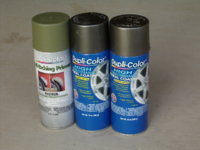 IMGP5594.JPG245.3 KB · Views: 524
IMGP5594.JPG245.3 KB · Views: 524 -
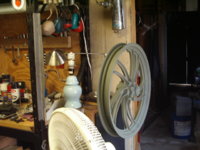 IMGP9962.JPG250.3 KB · Views: 471
IMGP9962.JPG250.3 KB · Views: 471 -
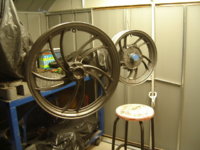 IMGP0110.JPG258.5 KB · Views: 470
IMGP0110.JPG258.5 KB · Views: 470 -
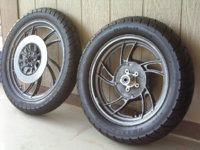 IMGP5559.JPG285.3 KB · Views: 489
IMGP5559.JPG285.3 KB · Views: 489 -
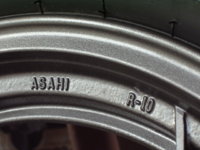 IMGP5569.JPG267.5 KB · Views: 498
IMGP5569.JPG267.5 KB · Views: 498 -
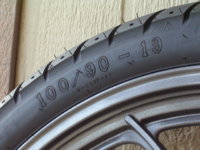 IMGP5579.JPG268.3 KB · Views: 513
IMGP5579.JPG268.3 KB · Views: 513 -
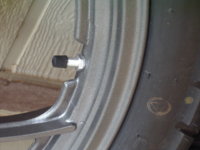 IMGP5581.JPG232.6 KB · Views: 492
IMGP5581.JPG232.6 KB · Views: 492 -
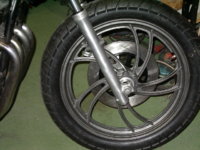 IMGP0461.JPG291.8 KB · Views: 496
IMGP0461.JPG291.8 KB · Views: 496 -
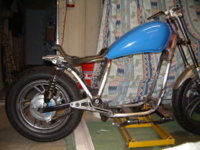 IMGP1689.JPG293.8 KB · Views: 448
IMGP1689.JPG293.8 KB · Views: 448 -
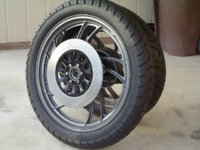 IMGP5539.JPG271.3 KB · Views: 510
IMGP5539.JPG271.3 KB · Views: 510 -
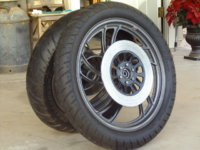 IMGP5544.JPG268.3 KB · Views: 460
IMGP5544.JPG268.3 KB · Views: 460

 No doubt there.
No doubt there. 